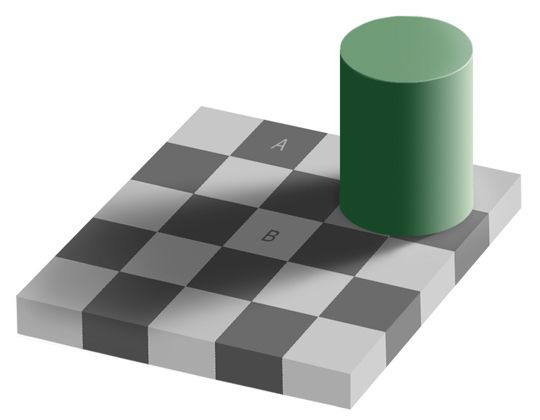Experiment 3 - The chessboard illusion
Here is a simple example of the way that your brain's sophisticated technology for identifying shapes and shading can be used to produce a misleading image.
We're all familiar with the layout of a chessboard, and our brains know how to process the effects of shadows. But this image is drawn in a way that specifically misleads the interpretation of those effects. It is quite clear in the image above that square A, one of the black squares, is much darker than square B, one of the white squares. In fact, though, they are exactly the same shade of grey.
Click the image to watch the video.
Thanks to Professor Edward H. Adelson of MIT for what has been my favourite optical illusion for many years.
Click the image to watch the video.
Thanks to Professor Edward H. Adelson of MIT for what has been my favourite optical illusion for many years.

